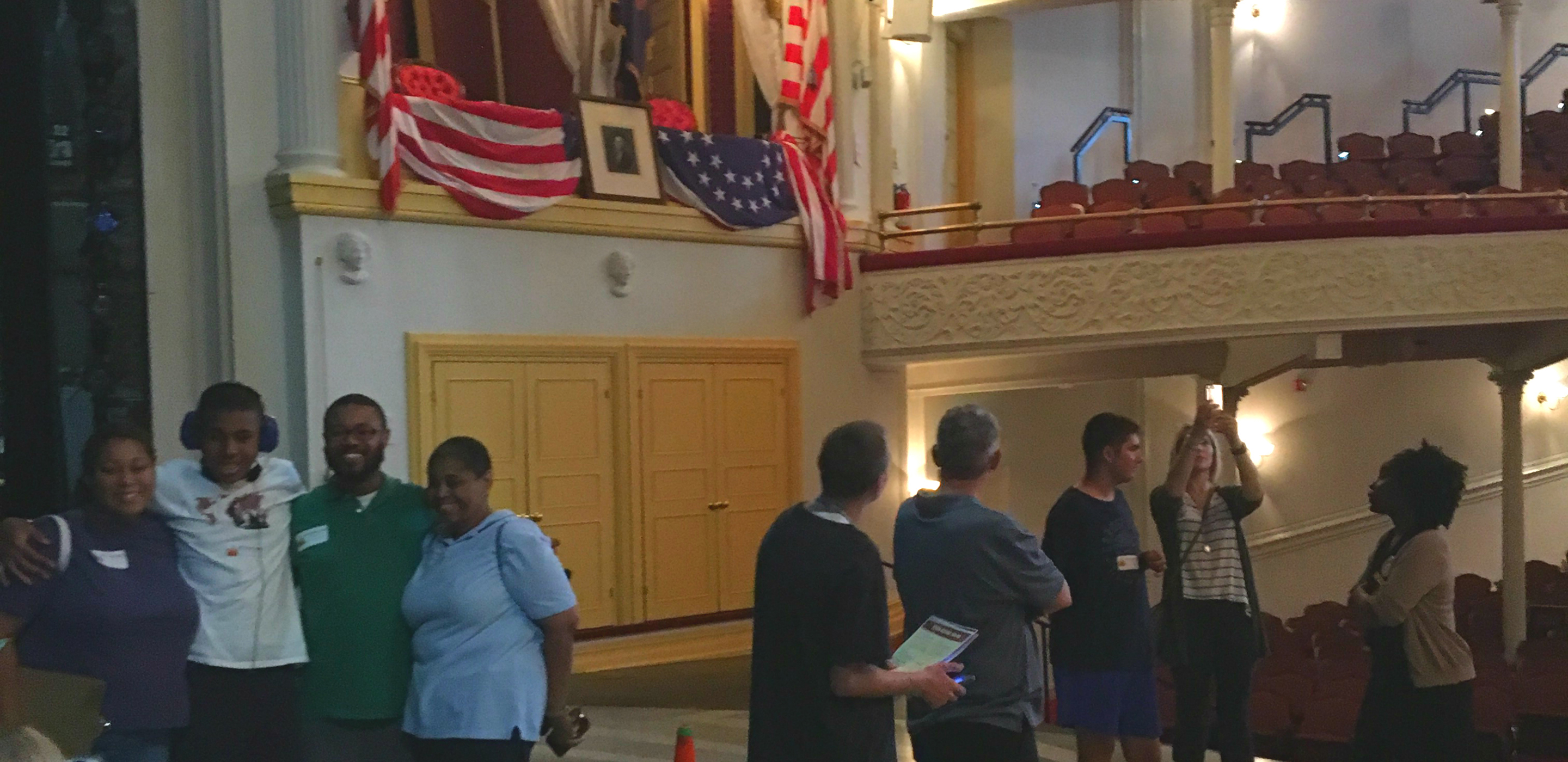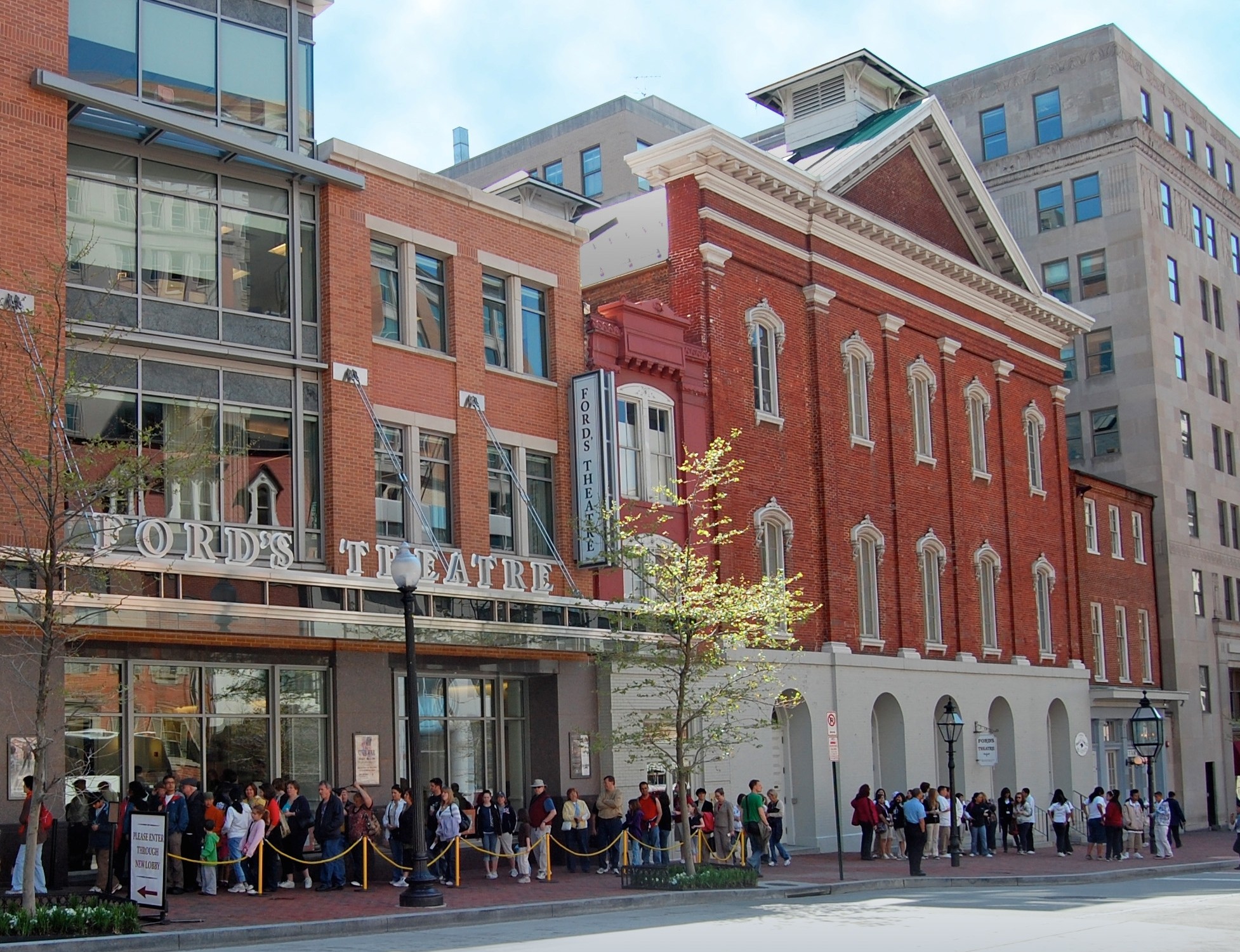
Hosting a Sensory-Friendly Museum Experience: Mornings at the Museum
During the past year, Ford’s Theatre staff have worked to make our site more accessible to visitors with disabilities. With that effort has come the recognition that some audiences need a different environment from the structured, often crowded programs that most daily visitors encounter. We wanted to find a way to make Ford’s accessible to individuals with cognitive and developmental disabilities—specifically people on the autism spectrum.

We understand that it can be difficult for families with a child on the spectrum to navigate large crowds, wait in line for tickets, and stick to an arranged visitation schedule. We determined that we were going to find a way to make our historic site more accessible for those who need a calmer, less-structured experience.
Sensory-Friendly Programming
We kicked off our efforts by hosting a Sensory-Friendly performance of The Wiz in May 2018. (Read about that performance in our blog post here.) In preparing for that event, we experienced a steep learning curve. We learned about creating spaces where individuals could take a break from the theatre action, how people with cognitive disabilities process stimuli, and the kind of staffing required to meet the needs of this audience. With that performance under our belts, we were prepared to take on a new kind of event: a sensory-friendly historic site visit.

Enjoyed helping out at @fordstheatre ‘s first Morning at the Museum program! I worked with my colleague Jake in executing his idea: kids located their schools on a map of the area today, then found it in 1865.
Credit for this program goes, in particular, to @aalonzy! pic.twitter.com/olVjzFPBmh
— David McKenzie (@dpmckenzie) August 4, 2018
Ford’s staff had already made contact with an amazing resource: Ashley Grady, a Program Specialist with the Smithsonian Accessibility Program. Ashley runs a program called Morning at the Museum, in which museums around the D.C. area open outside of public hours for an hour or two, specifically for individuals on the autism spectrum and their families. Ashley helped us organize our sensory-friendly theatre performance, and when we were ready, proposed that we team up to offer this kind of experience for our museum. Originally limited to Smithsonian institutions, Morning at the Museum is now expanding to include other D.C.-area sites. Ford’s was lucky enough to become part of the program.
The Day of the Program
We hosted our program on Saturday, August 4. One-hundred and 50 visitors were registered for the event (in fact, registration filled up very quickly and we had a waiting list)!
Instead of opening to the public at 8:30 a.m. as we normally do, we opened our lobby for the first two hours of the morning only to those who were signed up for this event. Members of the general public were not permitted into the lobby until the event was over so that our audience would feel comfortable and welcome in an environment that was less crowded than usual. During that time, visitors were able to freely explore both the Theatre and the Ford’s Theatre Museum.

As a special treat, we opened up the stage for visitors to walk around on—something we don’t normally have available to daytime visitors. We chose not to open the Presidential Box, as access to the Box requires walking down a number of steps, and we wanted to make sure all our visitors could access everything that was available on site.
An activity table was set up in the lobby, where staff led the visitors in a craft called Lincoln’s Garden. As part of this activity, families use construction paper and popsicle sticks to make flowers. Each petal on the flower represents qualities of President Lincoln.
Two Story Time sessions in the theatre attracted dozens of families. Staff members took turns reading the book Looking at Lincoln by Maira Kalman. In the Museum, period-style clothing from the 1860s was available for visitors to try on as they explored.

To meet the needs of our visitors for this program, staff set up a Take-A-Break space in the backstage area. This space was equipped with bean bag chairs, pillows and sensory toys for anyone who needed to rest during their visit.
Take Aways
During the morning, adults and children alike got an opportunity to see the historic site in a stress-free environment suited to their needs. Most of our visitors for this program were families with young children on the spectrum, but we had older kids and adults with cognitive disabilities take part as well.

My favorite moment came during the first story hour. Attendees were engaged in the story of Lincoln and loved to participate in the experience, calling out facts they knew about Lincoln as the story went along. They were reactive when the story mentioned a fact they were already familiar with. The emotion in the room was palpable when the story talked about Lincoln’s assassination. It’s not often that we get to share a moment like that with kids who are totally comfortable and engaged, and it was a real highlight of the event.
All of us who worked the event were thrilled to share the story of President Lincoln with such an engaged and enthusiastic audience. It was truly a gift to be able to provide a gentler environment to families who need it and want to take advantage of D.C.’s cultural institutions. As for those who attended, they were excited to be able to experience Ford’s Theatre in a way that was special and comfortable. More than anything, visitors expressed enjoyment at the experience of being able to walk on the stage.
This event is one that we want to make a regular part of our programming rotation. We loved the experience of being able to bring our site to those who haven’t been able to come in the past because of sensory sensitivities. We’d even like to branch out to evening events for adults with sensory sensitivities.
Colleen Prior was Visitor Services Manager at Ford’s Theatre.

